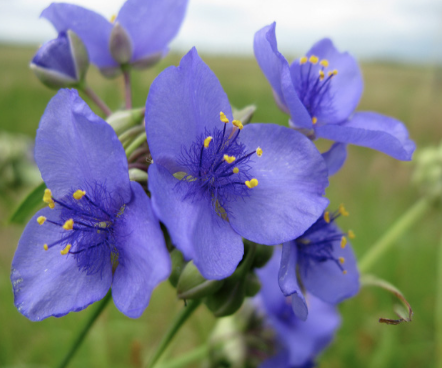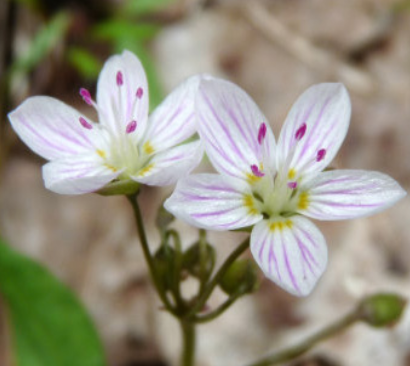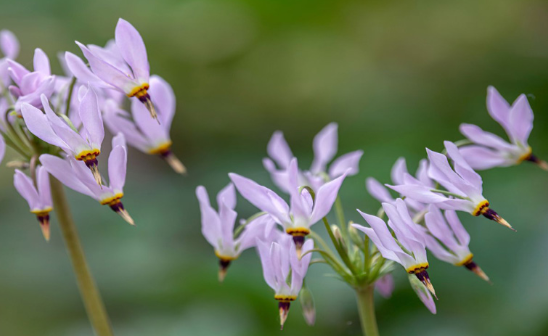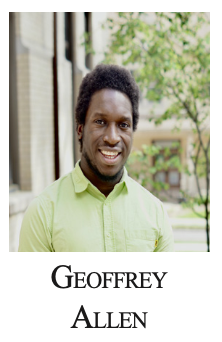




Caroline Ward, S&E Editor
As the days lengthen and the winter snows melt, the soil of Wooster, Ohio begins to warm, stimulating the growth of a number of indigenous plants and wildflowers. Take a walk around town and you may begin to notice the soft green shoots and pastels of budding flowers signaling springtime in Northeast Ohio. Our campus is home to a diverse congregation of native plants, hundreds of which are currently flourishing in the milder weather and warm soil. April in Ohio is Ohio Native Plant month, and to celebrate, this brief guide will explore just a few common flora that students are likely to encounter as they make their way around campus.
Bluejacket (Tradescantia ohiensis)
This is one of several native flowers that can be found in larger of the College’s Pollinator Plots. The branched, erect stems of Bluejacket or Ohio Spiderwort are tinged purple and bear grass-like leaves from up to eight nodes. Showy clusters of blue to rose, three-petaled flowers top the stems. Flowers tend to open in the morning.
Shooting Star (Dodecatheon meadia)
Perennial, sends up a leafless scape to two feet in height, terminated by many-flowered umbels of drooping flowers, these with five long white or rose petals. Yellowish stamens and anthers form a beaklike structure. Numerous basal leaves form large tufts.
Wild Lupine (Lupinus perennis)
Showy, elongate clusters of purple, pea-like flowers top the 1-2 ft. stems of this perennial lupine. Blue, pea-like flowers are in an upright, elongated, terminal cluster on an erect stem with palmately compound leaves. Its leaves are divided into seven to 11 leaflets. Occasionally flowers range from pink to white.
Jacob’s Ladder (Polemonium reptans)
The attractive, pinnately compound leaves and the loose flower clusters of this perennial arise on separate stalks. The stalks are slender and somewhat weak, rising 10-20 in. A smooth, weak-stemmed plant with light blue to purple, bell-shaped flowers in loose clusters.
Spring-beauty (Claytonia virginica)
Small, delicate perennial from deeply buried tuber from which two or more stems arise. Leaves two, opposite, straplike and somewhat succulent. Flowers whitish to more commonly tinged heavily with pink due to prominent colored nectar guides on petals.
Marsh-marigold (Caltha palustris)
Colonial perennial, large glossy dark-green kidney-shaped leaves held erect on succulent stems, up to a foot or so in height. Shiny yellow sepals form showy flowers with a thick brush of stamens.
Violet Wood-sorrel (Oxalis violacea)
The long-stemmed leaves of this delicate plant grow from the base and at first are longer than the flowering stem. They are divided into three leaflets, gray-green to bluish-gray above and green to reddish-purple below. Like those of all wood sorrels the leaves fold downward, together, at night and in cloudy weather. There are between four and 19 flowers at the end of each stem, lavender to pinkish-purple, the eye of the flower usually a deeper purple.
Wild flower descriptions provided by http://www.wildflower.org and http://www.knoxcountyparks.org.





